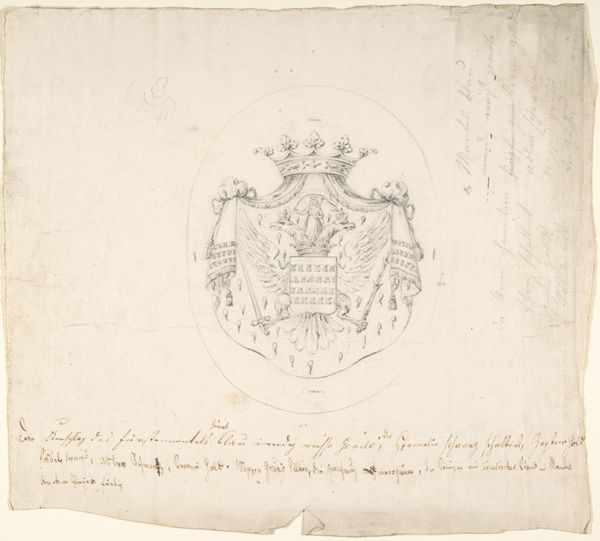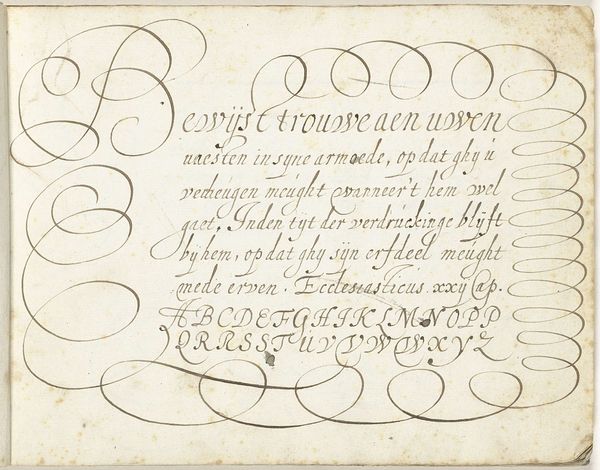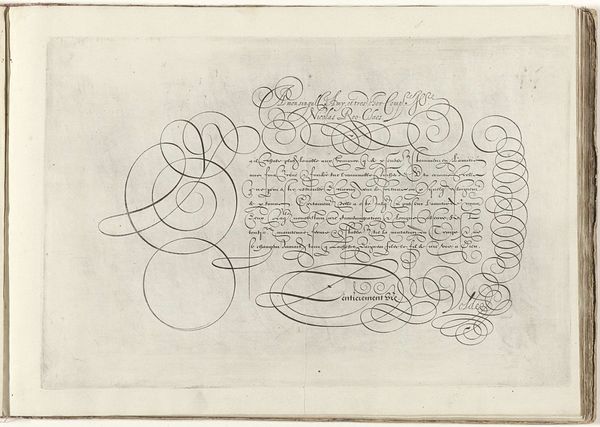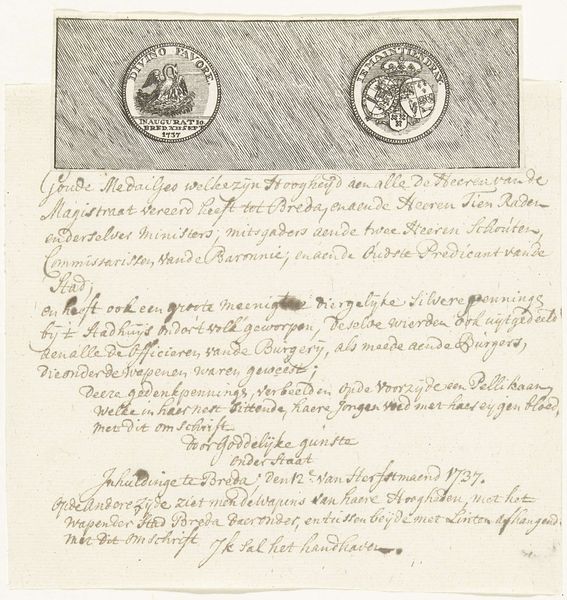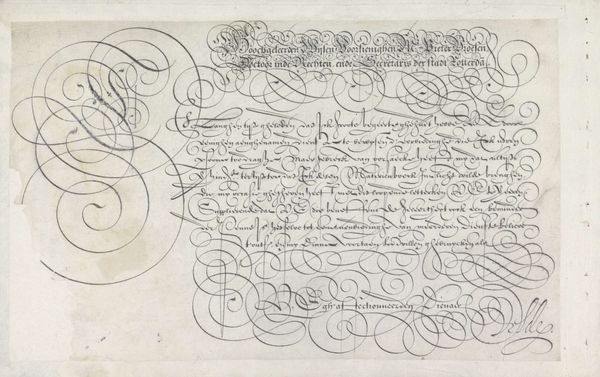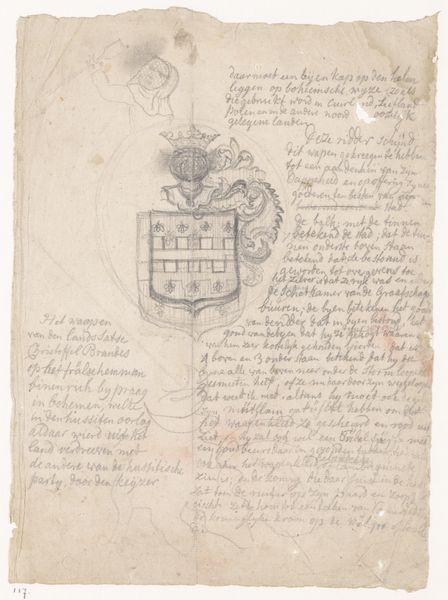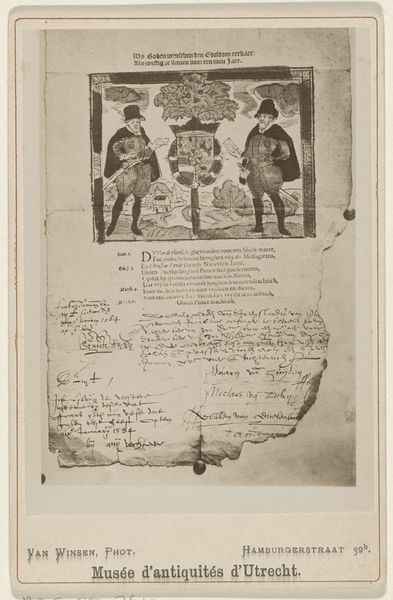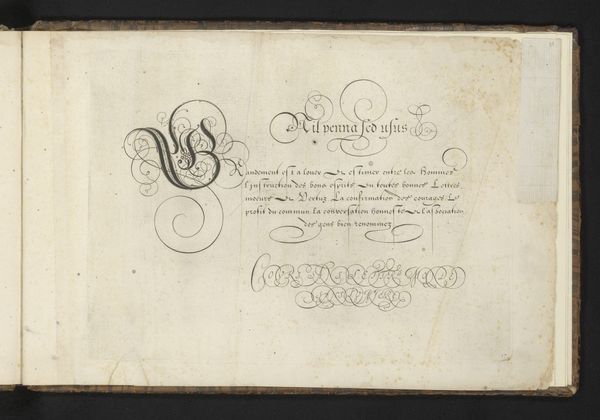
drawing, paper, ink
#
portrait
#
drawing
#
paper
#
11_renaissance
#
ink
#
northern-renaissance
Dimensions: height 95 mm, width 147 mm
Copyright: Rijks Museum: Open Domain
Curator: So, this little marvel before us is a drawing from 1598 called "Wapen van Josephus Justus Scaliger," which translates to "Coat of Arms of Josephus Justus Scaliger." It’s an anonymous piece done in ink on paper, which is kind of amazing considering how vibrant it still looks. What jumps out at you? Editor: I’m immediately struck by how intimate it feels, despite the grandiosity implied by a coat of arms. The aged paper, the delicate linework... It's like stumbling upon a forgotten personal note rather than a formal declaration. There's also something unsettling about the creature perched atop the crest. What IS that thing? Curator: Indeed. The creature, likely a heraldic lizard or dragon, is part of the Scaliger family's iconography. Scaliger himself was a fascinating figure, a scholar, considered one of the founders of modern historical scholarship. Coats of arms were not just decoration; they signaled lineage, status, and allegiances in the hierarchical society of the Northern Renaissance. Think of it as the Instagram bio of the 16th century! Editor: I love that analogy! And looking at it that way, it tells a story far beyond just the individual. It hints at the networks of power, the anxieties of legacy… it's all woven into this tiny drawing. I also see there is quite a bit of Latin text on the paper. Curator: Yes! That’s a key component. It suggests both Scaliger's humanistic learnings and perhaps an inscription for posterity that might underscore virtues, or make claims. The integration of text and image elevates the coat of arms from mere symbol to a more complex statement about identity and ambition. Editor: I find myself wondering about the choice to remain anonymous, as this artwork remains listed as. Was it meant to be circulated privately? Did Scaliger commission this, or was it created by an admirer? There’s something powerful about the silence surrounding its creation; it encourages a more open reading, doesn’t it? Curator: Absolutely. This artwork invites us into a space of contemplation – not only about Scaliger himself, but about how people in the Renaissance used imagery, self-fashioning, and symbolism to broadcast very carefully crafted identities. It feels fitting somehow, for a scholar whose life was dedicated to uncovering the nuances of history. Editor: A puzzle box, carefully rendered in ink. And that curious reptile watching over it all… gives me shivers!
Comments
No comments
Be the first to comment and join the conversation on the ultimate creative platform.
